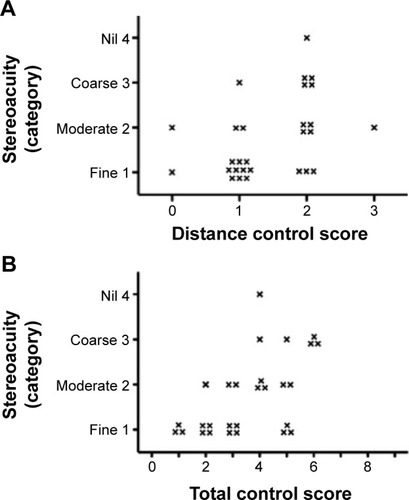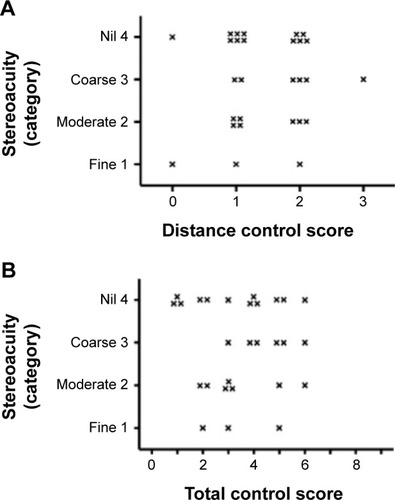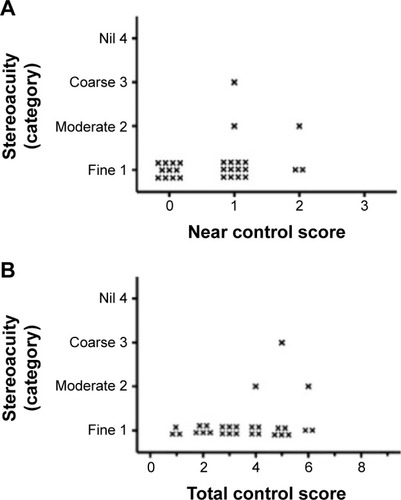Figures & data
Table 1 The revised Newcastle Control Score
Table 2 Classification of the results of the stereotests into four categories
Table 3 Median and ranges for each stereotests for cases and controls
Table 4 Categorical agreement between the System Chart SC-1600 Pola and the Distance Randot Stereotest in patients with intermittent exotropia
Table 5 Categorical agreement between the System Chart SC-1600 Pola and the Distance Randot Stereotest in controls
Figure 1 Relationship between NCS and distance stereoacuity using the SC test.
Abbreviations: NCS, Newcastle Control Score; SC, System Chart SC-1600 Pola.

Figure 2 Relationship between NCS and distance stereoacuity using the DR test.
Abbreviations: DR, Distance Randot Stereotest; NCS, Newcastle Control Score.


